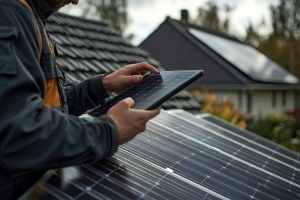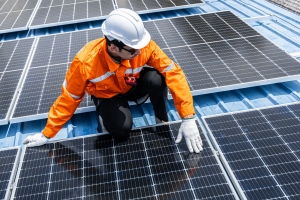
As energy costs continue to increase in Maryland, solar panels have the potential to reduce homeowners’ yearly electricity bills. The solar installation process may seem complex; homeowners must choose between equipment types, financing options, and incentives to get the proper solar panels for their homes. However, with professional guidance, homeowners can gain essential knowledge that helps them make an informed decision.
This guide aims to give first-time Maryland solar panel buyers a clear outline of what to expect from the buying process, how to make the right choices for their needs, and other factors to consider before choosing a provider.
Why Choose Solar Power in Maryland?
Through state-sponsored incentives and industry changes, Maryland has become one of the most solar-friendly states in the U.S. Its policies and incentives strongly encourage homeowners to switch to solar, including solar renewable energy credits (SRECs) that reimburse homeowners for excess power generation. As of the time of writing, only nine states besides Maryland, plus Washington, D.C., have SREC markets.
This alone puts Maryland homeowners in an advantageous position to increase the value of their solar arrays. However, it is not the only benefit. Maryland also requires utilities to offer net metering policies on many solar arrays, offers property tax exemptions for solar panels, and leverages sustainable energy goals on utility providers, which increases solar demand.
Additionally, major providers such as BGE and Pepco plan to continue increasing base electricity costs for homeowners over the coming months and years. Now is a good time for Maryland home and business owners to invest in solar energy before costs increase.
A Step-by-Step Guide to Buying Solar Panels
Despite recognizing the advantages, many Maryland home and business owners wonder how to choose the proper solar panels, install them, and gain maximum benefits. This step-by-step guide can help:
Assess the Roof and Calculate Energy Needs

The first step is to assess the home or business’s current energy situation. Not every roof is ideal for a solar array, but experienced providers can often customize the solution for the layout, offer advice to maximize its potential, or offer other options. These are some of the factors the property owner and provider should look for when doing the initial assessment:
- Roof Orientation: The best solar coverage in Maryland is usually a South-facing roof with a pitch angle of 30-40 degrees. East and West-facing roofs can work, and North-facing roofs often get the least sun.
- Shade Coverage: Shade can impact the effectiveness of the solar panels. Nearby structures and mature trees can shade the roof year-round or in certain seasons.
- Roof Condition: Solar arrays can last 30 years, so property owners may choose to replace their roof before investing in the solar system to make the process smoother.
- Energy Usage: Solar installations come in different sizes. Providers will review the property’s current electricity bills to choose the right size for the owner’s needs. Arrays that are oversized for the property do not necessarily provide extra benefits.
Essential Takeaway
Regardless of the property’s conditions, solar vendors can help homeowners find the most effective array for their needs. For example, shade coverage can be improved with differently oriented panels or strategic tree-trimming.
Choose a Financing Option
Once the property has been assessed for its energy needs, owners must decide whether to buy, lease, or finance their solar arrays. Each option has its own benefits in different situations:
- Buying an installation allows the property owner to claim SRECs and increased home value. This option has the highest upfront costs and long-term benefits.
- Leasing an installation means the solar company owns the array and reaps additional benefits beyond solar generation. A lease requires a fixed monthly payment for the equipment maintained and insured by the provider. PPAs are structured in a manner comparable to lease agreements.
- Financing: For homeowners who cannot afford solar panel installations outright, solar loans can be acquired to finance them. The goal is to find financing terms with monthly payments that are less than the monthly electricity bill.
Essential Takeaway
Leasing may be a more straightforward upfront process. Still, solar panel ownership is the most cost-effective in terms of long-term benefits, especially since Maryland has state-sponsored incentives for solar panel owners. However, all financing options can provide opportunities for benefits in the right situation.
Choose the Right Installer

Qualified solar installers guide property owners through the installation process from panel orientation and selection to financing. These are the most important factors to look for when choosing a provider:
- Local Maryland presence with local labor
- Multiple equipment options, including several brands
- Transparent energy assessments, cost assessments, and installation proposals
- Clear design and installation timelines, as well as long-term support plans
- Solar industry organization certifications
- Receptive to questions, concerns, and alternative options
By comparing multiple solar providers, property owners can maximize the benefits from their new solar installations by making sensible choices about strategic property placement, energy usage, and payment plans.
First-Time Solar Panel Buyers Need Providers They Can Trust
At Energy Select, our experienced team of local installers helps home and business owners in Maryland design, optimize, and install solar arrays that make the most sense for their properties. Our team knows the Maryland-specific benefits available and national incentives to help owners get the most from their systems, finance them strategically, and save on their power bills.
Contact us today to learn more about your property’s installation needs, financing options, and individual advantages to make the solar installation process as seamless and beneficial as possible.


